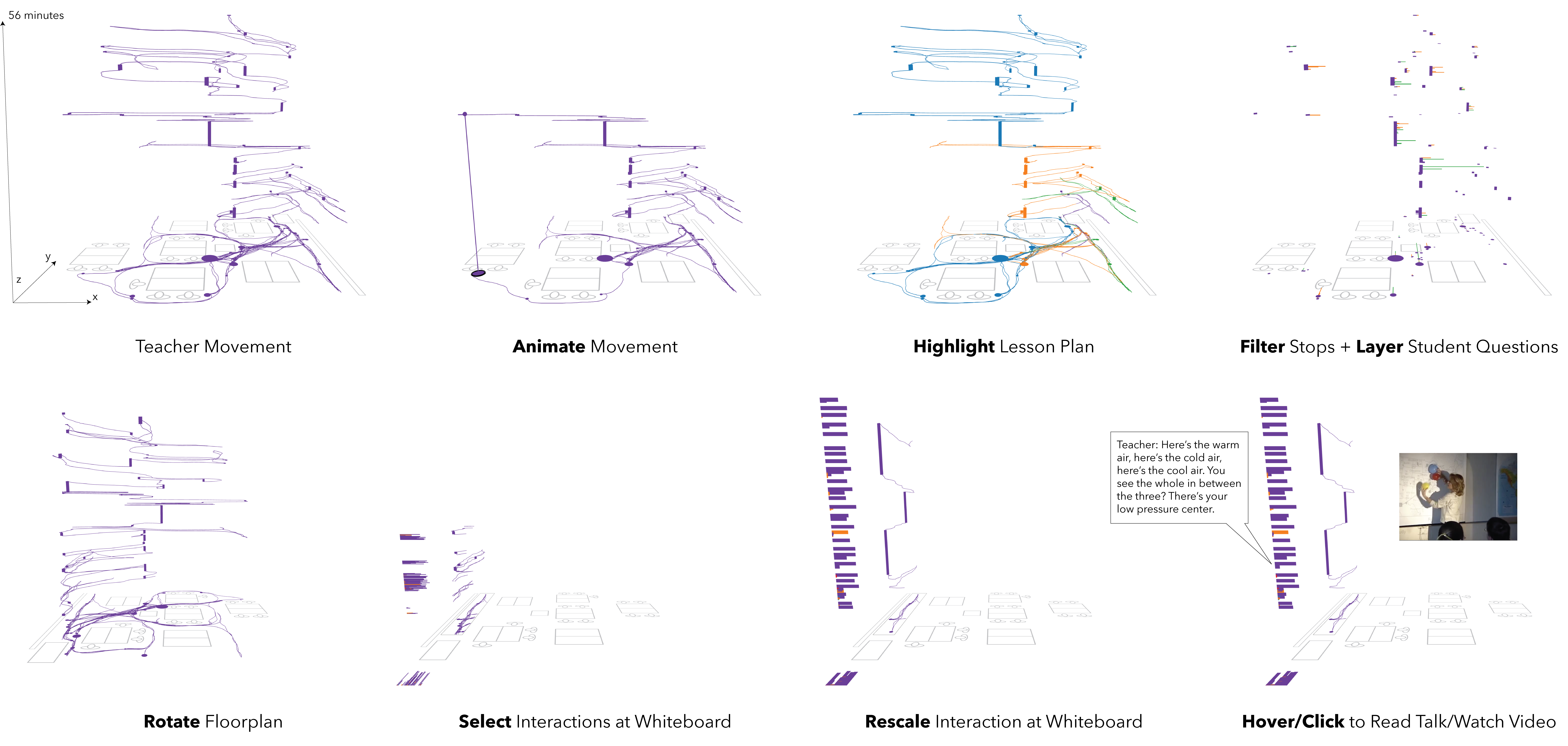
Interaction Geography
Interaction Geography is a visual method for exploring how people and things move and interact over space and time in settings like classrooms, museums, and public spaces. The method is supported by two open-source tools: Mondrian Transcription for manually transcribing movement from video, and the Interaction Geography Slicer (IGS) for dynamically visualizing movement, conversation, and video data over space and time.
Background
Interaction Geography is an interdisciplinary approach that enables researchers and practitioners to analyze, interpret, and even speculate about the spatial and temporal dynamics of social interaction across diverse settings. It provides insights that can inform design, policy, and practice in fields ranging from education and architecture to computer science. The approach builds on the work of geographers such as Torsten Hägerstrand, connecting these ideas to qualitative research traditions like interaction analysis and transcription, contemporary visualization techniques, and ethical approaches to data collection and use. Interaction Geography is supported by two complementary tools. The Interaction Geography Slicer (IGS) enables users to dynamically visualize movement data, conversation transcripts, and video over a floor plan or image. Movement data can be automatically generated using sensor-based technologies or computer vision tools such as OpenPose and imported into the IGS. When automated data is not available, the Mondrian Transcription Tool allows users to efficiently trace movement from video onto a floor plan or image, producing movement data that can then be imported into the IGS.
Examples
Classrooms
Explore secondary math teachers’ movement and use of space across different classrooms and countries.
Museums
Visualize visitor interactions and movement patterns in a cultural heritage museum.
Early Childhood Education
Examine teacher and student gestures during elementary classroom activities.
Computational Thinking
Visualize interactions between students, teachers, and robots in computational learning activities.
Virtual Reality
Observe building occupant behaviors and interactions in virtual reality environments.
Public Spaces
Experience movement patterns in urban spaces as part of a personal geography teaching framework.
Musical Performance
Explore how performers and audiences move and interact during musical performances.
Early Prototypes
Investigate early prototypes and museum-based interactive visualizations using Interaction Geography.
IGS Animation Videos
View a curated collection of video animations produced with the IGS tool.
Tools
Mondrian Transcription
An open-source tool for efficiently transcribing movement from video when automated data isn't available.
Start TranscribingInteraction Geography Slicer
A dynamic visualization tool for exploring movement, conversation, and video data across space and time.
Start Slicing